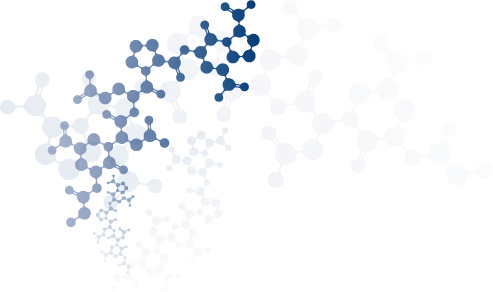FAQ
-
All you need to know about peptides and proteins
You will find here our advices for optimal storage conditions and solubilization of delivered peptides. Please contact us for further information you might require.
-
GENERALITY
Before solubilizing peptides it is important to evaluate the net charge of your peptide. The simple rules stated below are used to determine if the peptide is basic, acidic or neutral.
- Assign a value of -1 to each acidic residue (D, E, and C-terminal COOH).
- Assign a value of +1 to each basic residue (K, R and the N-terminal NH2).
- Assign a value of +1 to each H residue at pH<6 and zero at pH >6.
Count the total number of charges of the peptide at pH 7 (all D, E, K, R, C-terminal COOH, and N-terminal NH2). Calculate the overall net charge of the peptide. Some peptides can cause some solubilization problems. Firstly, start with deionized water. If peptide remains insoluble, different additives can be added to water in accordance with the type of peptide and/or your assay :
- Basic peptides (overall positive net charge): add acetic acid (up to maximum 20-30% for difficult peptides) or TFA (up to 1%)
- Acidic peptides (overall negative net charge): add ammonia (ammonium hydroxide) (up to 5%)
- Very hydrophobic or neutral peptides: add acetonitrile (up to 10-20%), isopropanol, DMSO or DMF.
In all cases, sonication is recommended. When your peptide is fully solubilized, add solvent/buffer in order to reach concentration required.
SPECIFIC CASES
Cysteine (C), Methionine (M) or Tryptophan (W) :
Peptides containing these amino acids are extremely sensitive to oxidation (risk of dimerization, cyclization) and should be solubilized with water or deoxygenated buffer (can be obtained by vacuum filtration or bubbling with helium, argon or nitrogen). Do not use basic solutions or DMSO in any case.
Glutamine (Q) :
Peptides containng a glutamic acid in N-terminal can form a pyroglutamate cycle in acidic solution. Solvents like acetonitrile or DMSO should be diluted to a concentration compatible with biological tests (ex cell culture…)
The net peptide content (NPC) is the real peptidic material fraction of the sample (i.e. the requested peptide and the peptidic impurities), the rest is salt & water. Depending on the aminoacids present in the sequence, the salt quantity is different. All basic residues have counter-ions coming from corresponding acid (TFA, AcOH or HCl). The nitrogen content determined by Elemental Analysis comes only from the peptidic material and therefore is used for quantification of peptide content in the sample. Ex : 10 mg of a peptide 95% purity, NPC=80%, contains 8 mg of the peptide at 95% purity. To have 10 mg of NPC, don’t forget to specify that you want NPC quantity.
For long-term storage the peptide should be kept in solid form in the freezer at -15 °C. For short-time storage a refrigerator (+4 °C) will suffice. After removing from the fridge or the freezer, let the peptides warm up to room temperature before opening to avoid water condensation. Peptides should be protected from intense sunlight. Peptides containing fluorophores should be kept in the dark. Depending on the storage condition and the aminoacids contained in the sequence, the shelf stability of peptide may range from few weeks to years.


